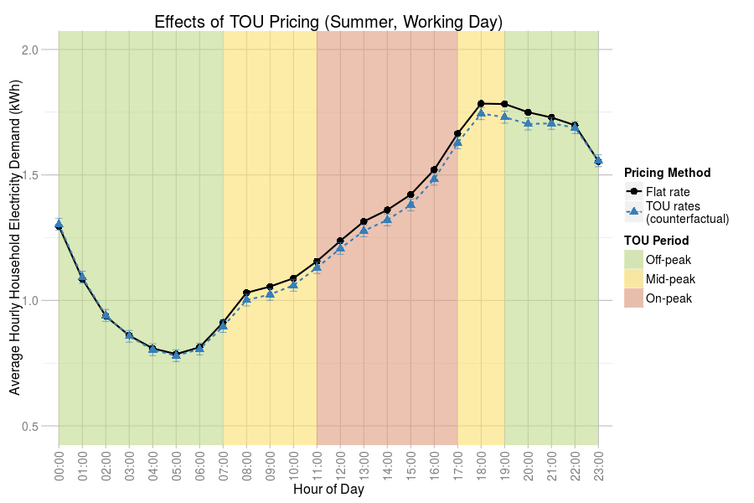Are smart meters delivering on their promise?

Smart meters have two clear goals: to save energy and to shift consumer use of energy from on-peak to off-peak hours.
But new research suggests smart meters and time-of-use electricity pricing in Ontario have only modestly reduced residential energy demand during the most expensive peak periods.
Smart meters that measure hourly electricity consumption have been installed in homes across Ontario to enable time-of-use (TOU) pricing with a goal of setting different prices of electricity throughout the day. For example, on summer weekdays, one kilowatt-hour of electricity costs 7.7 cents from 7 p.m. to 7 a.m., and 15.7 cents from noon to 5 p.m. The price difference is meant to give residential customers an incentive to use less electricity during peak-demand times.
We recently published a study in the Journal of Energy Policy in which we asked: Is time-of-use pricing effective? Compared to flat pricing (previously used in Ontario), has there been any change in electricity consumption during high-demand periods?
Past research inconclusive
Previous studies that attempted to answer these questions produced no common methodology or results. So we set out to produce a clear, objective, transparent, efficient and reproducible study.

The above graph summarizes our results. The x-axis corresponds to the hour of the day, and the y-axis measures the average hourly household consumption. The red time zone corresponds to on-peak (highest) pricing, followed by mid-peak pricing in yellow and off-peak (lowest) pricing in green. We excluded weekends and holidays since off-peak pricing is in effect all day on those days. The solid black line denotes actual consumption during the summer of 2011, just before the introduction of time-of-use pricing in November 2011. The dotted blue line corresponds to our prediction of what the consumption would have been had that pricing been in place. The prediction is based on actual consumption during the summer of 2012, keeping in mind the difference in weather and the number of working days between the two summers.
Using smart-meter data from 20,000 households in southwestern Ontario for nine months before and after TOU pricing was introduced on Nov. 1, 2011, we compared the summers of 2011 and 2012. Our approach adjusted for variances in pricing, weather and working days, which can affect electricity consumption due to factors such as air-conditioner use.
Demand not being shifted
What did we find? Our analysis showed that on-peak and mid-peak consumption fell by about 2.5 per cent, while off-peak consumption remained about the same. This suggests that electricity demand is not being shifted to off-peak periods, but is being conserved.
We hope our results will help the Ontario government and other jurisdictions to determine whether time-of-use pricing and smart meters are as effective as intended, or whether new initiatives should be considered to reduce or shift residential demand.
We also encourage policy makers to make more electricity consumption data available to validate new pricing schemes and conservation programs. Our analysis would not have been possible without access to smart-meter data from before and after the introduction of TOU pricing. Additionally, policy makers should demand that the studies they commission have clear and transparent methodologies.
This article was originally published on The Conversation. Read the original article.![]()















